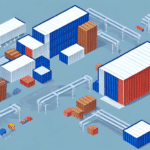Introduction to Just-in-Time (JIT) Inventory Management
Just-in-Time (JIT) Inventory Management is a transformative strategy that has reshaped how businesses handle their inventory levels. Originating from lean manufacturing principles, JIT focuses on minimizing waste by synchronizing production and delivery with actual demand. This methodology enables companies to optimize their production processes, decrease inventory holding costs, enhance cash flow management, and bolster quality control.
What is Just-in-Time Inventory Management?
Just-in-Time Inventory Management emphasizes delivering products precisely when they're needed, aligning production closely with customer demand. This approach requires an efficient and agile production system capable of responding swiftly to fluctuating customer needs. By maintaining minimal inventory levels, companies can significantly reduce holding costs, optimize production workflows, and minimize waste.
A core advantage of JIT is its ability to enhance responsiveness to market changes. With lean inventory, businesses can rapidly adjust their production to meet evolving customer demands, thereby maintaining a competitive edge and a strong market position.
Implementing a JIT system, however, demands high levels of coordination and communication across various departments. Trust between companies and their suppliers is crucial, as timely and accurate deliveries are essential for the system's success. Despite these challenges, numerous companies have successfully adopted JIT, witnessing substantial improvements in efficiency and profitability.
History of Just-in-Time Inventory Management
The concept of JIT Inventory Management originated in Japan during the 1960s, pioneered by Toyota to enhance their manufacturing processes. Toyota aimed to eliminate waste and boost efficiency by implementing the JIT system, which led to reduced inventory levels, minimized waiting times, and streamlined production processes. The success of Toyota's approach inspired global adoption, and today, JIT is utilized by businesses across various industries worldwide.
JIT's ability to swiftly respond to demand fluctuations makes it especially valuable in sectors with rapidly changing customer preferences, such as fashion and technology. Additionally, by lowering inventory storage and management costs, JIT helps companies avoid overstocking or understocking, further reinforcing its role as a vital tool for modern businesses.
How Does Just-in-Time Inventory Management Work?
The JIT system operates on the "pull" philosophy, where production and delivery are driven by actual demand rather than forecasted projections. This necessitates a reliable and efficient supply chain, with strong collaborations between companies and their suppliers to ensure timely delivery of materials.
Key techniques in JIT include:
- Just-in-Time Ordering: Ordering materials only as needed for production.
- Kanban Systems: Visual signals that trigger the replenishment of inventory.
- Continuous Monitoring: Real-time tracking of inventory levels and production processes.
These methods help reduce inventory levels, enhance production efficiency, and optimize supply chain operations.
JIT also contributes to waste reduction and improved efficiency by ensuring that products are only made and delivered when necessary, preventing overproduction and excess inventory. However, the system's success hinges on seamless coordination and robust supplier relationships, as any supply chain disruptions can adversely affect production and delivery schedules.
Advantages of Just-in-Time Inventory Management
Increased Efficiency in Supply Chain
JIT optimizes supply chain processes by minimizing the time and costs associated with production and delivery. By coordinating closely with suppliers to receive only the necessary components, companies can eliminate waste, reduce costs, and enhance overall supply chain efficiency.
Reduced Inventory Holding Costs
Maintaining minimal inventory levels significantly cuts down holding costs, including storage, handling, insurance, and labor. This reduction frees up capital that can be allocated to other critical business areas.
Improved Cash Flow Management
By lowering inventory levels, businesses can better manage their cash flow, allocating funds to marketing, research and development, and expansion initiatives. Improved cash flow supports long-term growth and operational flexibility.
Enhanced Quality Control
With JIT, quality issues can be identified and addressed promptly, ensuring that defects do not escalate into major problems. This proactive approach helps maintain high quality standards and reinforces the company's reputation for reliability.
Better Customer Satisfaction and Retention
JIT allows businesses to respond swiftly to customer demands, ensuring timely delivery and high levels of satisfaction. Meeting customer needs efficiently fosters loyalty and encourages repeat business, driving sustained revenue growth.
Increased Flexibility in Production
JIT enables companies to adjust their production processes rapidly in response to market changes. This flexibility helps prevent overproduction, reduces the risk of excess inventory, and maintains operational agility.
Improved Supplier Relationships
Closely collaborating with suppliers enhances trust and communication, leading to better pricing, faster delivery times, and higher-quality materials. Strong supplier relationships are fundamental to the success of the JIT system.
Challenges in Implementing Just-in-Time Inventory Management
Adopting JIT Inventory Management presents several challenges. It requires a highly responsive and reliable supply chain capable of adapting to changing customer demands swiftly. Establishing and maintaining close relationships with suppliers is essential to ensure timely delivery of materials. Additionally, any disruptions in the supply chain can lead to delays and negatively impact production and delivery schedules.
Overcoming the Challenges of JIT Inventory Management
To successfully implement JIT, companies must adopt a proactive approach by ensuring a robust supply chain and developing contingency plans for potential disruptions. Leveraging technology to optimize production processes and closely monitor inventory levels is also critical for identifying and addressing issues promptly.
Managing Supply Chain Risks in JIT Inventory Systems
Effective risk management strategies are vital for mitigating the risks associated with JIT. This includes continuous monitoring of the supply chain, developing backup plans, and employing advanced technology solutions. Building strong relationships with suppliers ensures quick responses to any supply chain issues.
The Role of Technology in JIT Inventory Systems
Technology plays a pivotal role in the success of JIT Inventory Management. Implementing systems for production optimization, inventory tracking, and supply chain monitoring enhances the efficiency and responsiveness of the JIT system. Additionally, technology aids in early detection and resolution of quality control issues.
Employee Training and Education
Transitioning to JIT requires significant changes in inventory management practices, necessitating comprehensive training and education for employees. Investing in training programs ensures that staff understand the principles and benefits of JIT, fostering engagement and commitment to the new system.
Costs and Benefits of JIT Inventory Management
While implementing JIT entails initial investments in technology, training, and process improvements, the long-term benefits often outweigh these costs. Companies can achieve substantial reductions in inventory holding costs, enhance production efficiency, and respond more effectively to customer demands, thereby gaining a competitive advantage and improving profitability.
Case Studies: Successful Implementation of JIT Inventory Management
Numerous companies have successfully adopted JIT Inventory Management, experiencing significant improvements in their operations. Toyota, the pioneer of JIT in the 1960s, achieved remarkable efficiency and waste reduction through this system. Dell implemented JIT to streamline its supply chain, resulting in lower inventory costs and enhanced responsiveness.
Other notable examples include:
- Harley-Davidson: Reduced inventory levels by 75% and increased inventory turnover rate by 13 times, leading to substantial cost savings and improved operational efficiency.
- Nike: Decreased lead times from 9 months to just 9 days by adopting JIT, allowing for faster response to market trends and consumer demands.
These case studies underscore the effectiveness of JIT in enhancing supply chain efficiency and driving cost reductions.
Conclusion: Is JIT Inventory Management Right for Your Business?
Just-in-Time Inventory Management offers a powerful framework for optimizing production processes, reducing inventory costs, improving cash flow, and enhancing quality control. However, its successful implementation requires a reliable supply chain, effective risk management strategies, and strong supplier relationships. Businesses must carefully evaluate their specific needs and goals to determine whether JIT is the right fit. When executed properly, JIT can provide a significant competitive advantage, driving long-term growth and operational excellence.






















